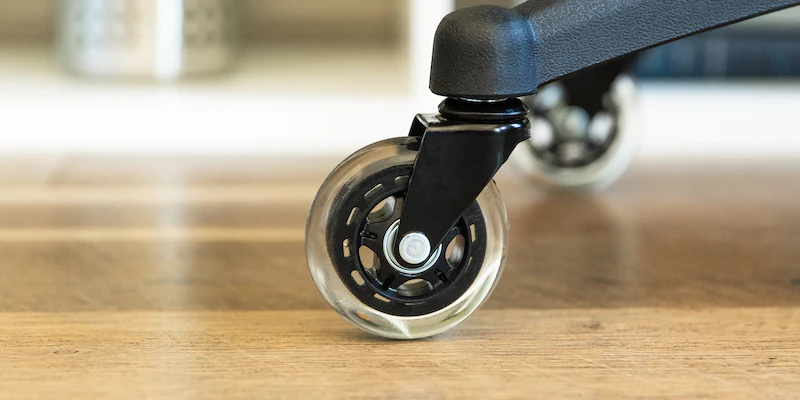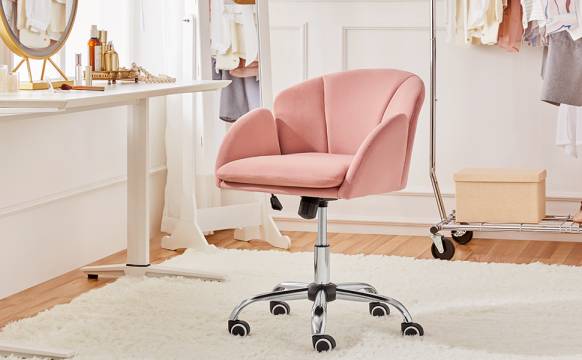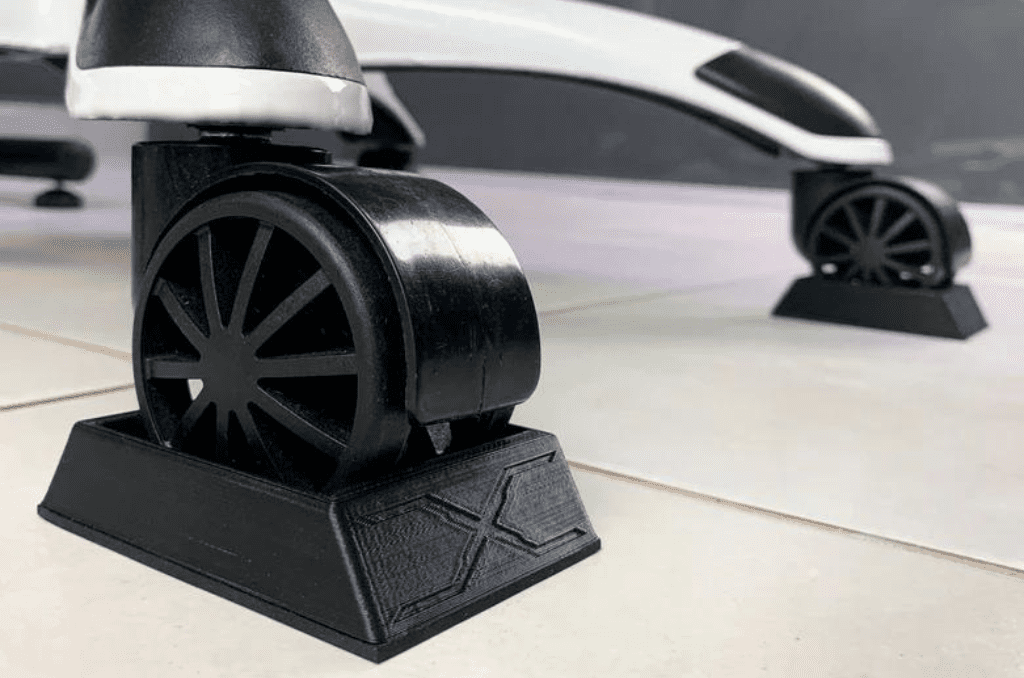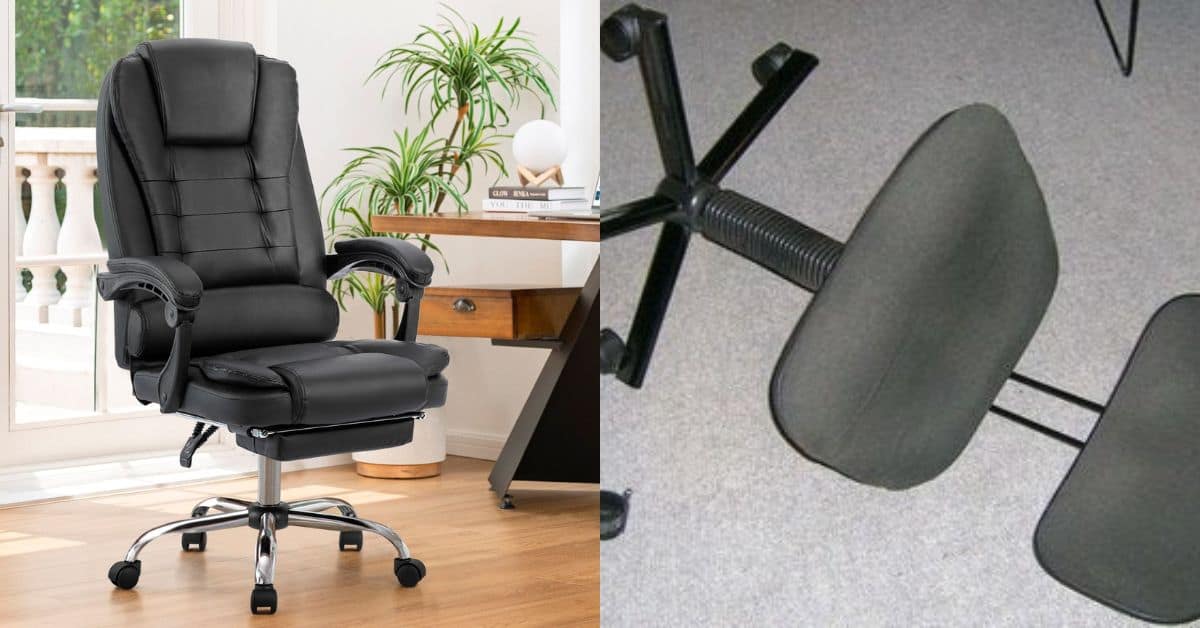This post contains affiliate links.
Are you constantly battling with your office chair sliding away every time you sit down or stand up? It’s a common annoyance in many workspaces. In this blog, I dive into simple yet effective strategies to keep your chair firmly in place, ensuring a stable and productive work environment.
Read on to discover easy-to-follow, three-step guide that will turn your sliding chair problems into a thing of the past. I’ve got all the tips, tricks, and insights you need to secure your seat and enhance your office comfort.
Step 1: Understand Why Is Your Chair Sliding

Before we jump into solutions, it’s crucial to understand why your office chair is sliding in the first place. Knowing the root cause will help you choose the most effective fix. So let’s break it down.
Weight Distribution
Weight distribution plays a crucial role in chair stability. An unevenly distributed weight can cause your chair to tilt and slide unexpectedly.
Imagine sitting at your desk and leaning too far to one side; this imbalance can cause the wheels on the opposite side to lift slightly off the ground, leading to sliding. It’s not just about the weight of the person using the chair but also how that weight is balanced.
Ergonomic experts often emphasize the importance of sitting squarely in the chair, with your weight evenly distributed, to maintain stability.
Chair Wheels
Chair wheels, or casters, come in various designs and materials, each affecting how a chair moves on different surfaces. Some are made for carpeted floors, while others are better suited for hard surfaces like wood or tile.
Soft-wheeled casters are ideal for hard floors as they provide better grip and reduce sliding. On the other hand, hard-wheeled casters work well on carpets.
The condition of these wheels also matters. Worn-out or damaged casters can lead to uneven rolling and sliding.
Floor Type
The type of flooring in your office can be a major factor in chair sliding. Hard, smooth surfaces like laminate or tile offer little resistance, making it easier for chairs to slide.
Carpets, especially thick ones, can provide more grip, but they also present their own challenges. Sometimes, the chair’s wheels can get caught in the carpet fibers, leading to uneven movement and sliding.
Identifying Your Specific Issue
To pinpoint the exact cause of your chair’s sliding, conduct a quick assessment.
Start by checking the chair’s weight distribution when seated. Are you leaning too far forward or to one side?
Next, examine the wheels. Are they designed for your floor type? Are they worn or damaged?
Finally, consider the floor itself. Is it too smooth or too soft for your chair’s wheels?
By systematically addressing these questions, you can identify the specific issue causing your chair to slide.
Step 2: Choose the Right Solution

The first step in selecting the right solution is to evaluate your specific needs. Consider factors like the type of flooring you have, the design of your chair, and your daily activities.
For instance, if you move around a lot in your chair, you’ll need a solution that allows for mobility without compromising stability.
Chair Mats
These are specially designed mats that you place under your chair. They provide a stable surface for your chair to rest on.
Pros:
- Easy to install
- Protects your floor from scratches
- Comes in various materials and designs to match your office decor
Cons:
- Can be expensive
- May not work well on all floor types
Wheel Locks

These are small devices that lock your chair wheels in place.
Pros:
- Highly effective
- Easy to install
- Affordable
Cons:
- Can be inconvenient if you need to move your chair frequently
- May not fit all wheel types
Rubber Bands or Duct Tape
You can also use household items like rubber bands or duct tape to increase friction between the wheels and the floor.
Pros:
- Cost-effective
- Quick to implement
Cons:
- Not a long-term solution
- May look unprofessional
Step 3: Implement Your Chosen Solution

After selecting the best solution to prevent your office chair from sliding, the next crucial step is implementation. Whether you’ve chosen chair mats, wheel locks, or a DIY method like rubber bands or duct tape, proper installation and usage are key to achieving maximum effectiveness.
How to Properly Use Chair Mats
Chair mats are a popular choice for preventing chair sliding, and when used correctly, they can be highly effective. To maximize their effectiveness:
- Choose the Right Mat: Ensure the mat is suitable for your floor type – mats for carpeted floors differ from those for hard floors.
- Size and Placement: Select a mat that fits your workspace and allows enough room for chair movement. Place it where you usually sit, ensuring it’s flat and secure on the floor.
- Maintenance: Keep the mat clean and check regularly for any signs of wear or damage. A damaged mat can be counterproductive, causing more sliding instead of preventing it.
Installing and Using Wheel Locks
Wheel locks are a straightforward solution for stationary tasks. Here’s how to install and use them:
- Installation: Most wheel locks can be easily attached to the existing wheels of your chair. Follow the manufacturer’s instructions for installation.
- Usage: Engage the locks when you need the chair to stay in place, and disengage them when you need to move. Remember, frequent engagement and disengagement might be needed throughout the day.
- Compatibility Check: Ensure the locks are compatible with your chair’s wheel type and size for optimal performance.
How To Use Rubber Bands or Duct Tape
For a quick, temporary fix, rubber bands or duct tape can be used:
- Rubber Bands: Stretch thick rubber bands around the circumference of each wheel. This increases traction and reduces sliding. However, they may need to be replaced often.
- Duct Tape: Apply strips of duct tape to the floor where your chair usually sits. This method can leave a residue, so it’s best used as a short-term solution.
As we’ve discussed the steps to prevent your chair from sliding, it’s also important to remember that the overall design and features of your chair play a crucial role in your comfort and productivity.
If you’re looking for a new office chair, don’t miss our guide on 11 essential features for chairs with lumbar support. A chair with good lumbar support can not only improve your posture but also enhance the stability and comfort of your seating experience.
Routine Chair Maintenance (Full Checklist)
Maintaining your office chair is crucial for ensuring its longevity and functionality. Regular maintenance not only prevents sliding but also enhances comfort and safety. Here’s a checklist to make sure maintain your chair routinely.
- Check wheels for damage or blockages.
- Tighten all loose screws and bolts.
- Ensure seat and backrest are secure.
- Clean chair and wheels regularly.
- Lubricate any adjustable parts.
- Inspect chair upholstery for wear.
- Examine chair mat and floor condition.
- Adjust chair settings for comfort.
Before You Go…
As you apply these tips to stop your office chair from sliding, don’t forget about the bigger picture of office ergonomics. For more insights, check out my article to ensure your seating setup supports your overall well-being.

